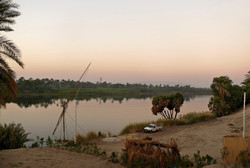Towards the sustainable use of Egyptian degraded soils
The National Authority for Remote Sensing & Space Sciences (NARSS) was established as an American-Egyptian joint project and is affiliated with Egypt's Academy of Scientific Research and Technology. The remote sensing (RS) sector of NARSS works with data provided by Earth Observation satellites to produce maps for the evaluation and monitoring of natural resources. Funded by the EU, the SUDSOE (Characterization and sustainable use of Egyptian degraded soils) project set out to provide the most advanced RS technology. Overall, the objective was to aid in the characterisation and more sustainable use of Egyptian degraded soils (EDSs). Stakeholder meetings helped identify opportunities, barriers and challenges in supporting the sustainable use of EDSs. The transfer and exchange of know-how and experience was achieved through twinning activities with partner organisations. In all, three exchange visits were carried out that led to the development of models for improving EDSs. Teams of different partners prepared scientific material for the project website to be included as part of the e-learning platform aimed at supporting graduate and postgraduate researchers in related fields. The material focuses on remote sensing and peaceful space science, intellectual property rights, wet analytical and nanomaterials applications, technology transfer activities and artificial neural network applications. Various dissemination, networking and cluster activities were undertaken to address target groups such as researchers, students, the general public and regional state authorities. Moreover, the established innovation office at NARSS published proceedings on project phases, fostering cooperation with industry and supporting innovation development. A scientific catalogue available in Arabic and English boosted NARSS visibility and supported collaboration and innovation with industry. Through capacity building, the SUDSOE project helped to reinforce NARSS scientific performance and EU synergies. This will ultimately contribute to sustainable national and regional socioeconomic development.



